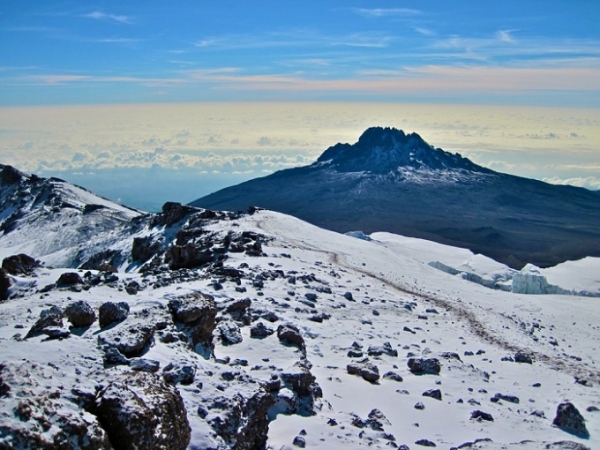Mountain Glaciers in Africa Impacted by Warmer Temperatures--Not Precipitation

At the height of the last ice age, there were massive glaciers in Africa's Rwenzori Mountains. Now, scientists have found that changes in air temperature rather than precipitation were what drove the expansion and contraction of these glaciers. This could have implications for understanding the melting glaciers of today.
The scientists used the beryllium-10 surface exposure dating method to chronicle the advance and retreat of Africa's glaciers. This allowed them to determine the ages of quartz-rich boulders atop moraines in the mountains. Moraines are actually ridges of sediments that mark the past positions of glaciers; they're the sediment that the ice has dragged and left behind over time.
So what did they find? It turns out that the glaciers in East Africa advanced between 23,000 and 20,000 years ago at the coldest time of the world's last ice ages. In fact, the glaciers expanded with regionally dry, cold conditions. Yet they retreated when the air temperature increased. This means that precipitation didn't have a lot to do with the advance and retreat, while the air temperature did.
The findings actually support the idea that air temperature is likely influencing the retreat of tropical glaciers today rather than declining snowfall or other factors. This, in turn, reveals how global warming may drastically impact the surrounding climate.
The findings are published in the journal Geology.

Facebook comments